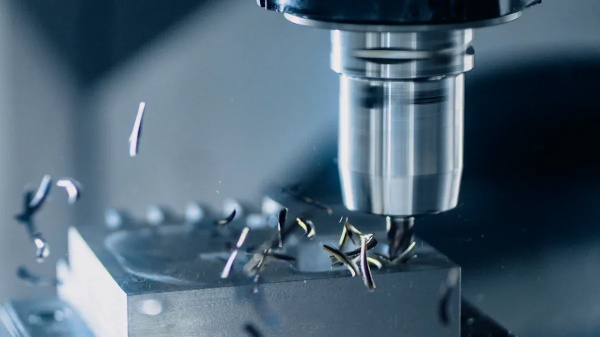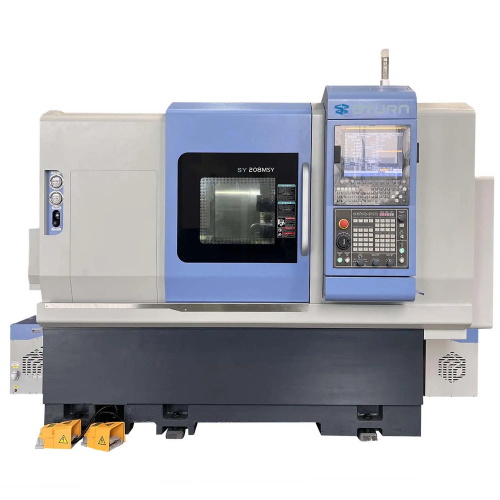In modern manufacturing, the integration of CNC multitasking lathe technology revolutionizes how you approach complex machining tasks. By combining Milling and Turning Machine in a single machine, this CNC multitasking lathe eliminates the need for multiple setups. It ensures parts are machined to completion with unmatched precision. Industries like aerospace and medical devices rely on this innovation to meet tight tolerances and enhance efficiency.
Key Takeaways
- CNC multitasking lathes do both Milling and Turning Machine together.
- This saves time setting up and makes production faster.
- These machines are precise and avoid mistakes when moving parts.
- They keep quality steady, even for tricky shapes.
- Buying these lathes can save money by using less labor.
- They also cut down on wasted materials.
Understanding CNC Multitasking Lathe Technology
Milling and Turning Machine: Key Processes Explained
Milling and Turning Machine are fundamental machining processes that form the backbone of modern manufacturing. Turning involves rotating the workpiece while a cutting tool removes material to create cylindrical shapes. This process excels in producing symmetrical components with high precision. Milling, on the other hand, uses a rotating cutting tool to remove material from a stationary workpiece. It is ideal for creating complex geometries, such as slots, pockets, and intricate contours.
Each process has unique strengths. Turning delivers exceptional accuracy, reducing waste and rework. Industries like aerospace and medical devices rely on this precision to meet stringent standards. Milling, however, shines in its versatility, enabling the creation of diverse shapes and features.
How CNC Multitasking Lathes Integrate These Processes
CNC multitasking lathes combine Milling and Turning into a single machine, streamlining production. These machines eliminate the need to transfer parts between separate setups, reducing errors and saving time. For example, an aerospace manufacturer once required 30 operations and 30 weeks to complete a part due to multiple setups. By adopting multitasking technology, they significantly reduced both the number of processes and delivery time.
This integration also enhances flexibility. You can machine complex parts in one setup, adapting quickly to diverse customer needs. The simplified workflow boosts productivity and ensures consistent quality.
Features That Enable Multi-Tasking Capabilities
CNC multitasking lathes incorporate advanced features to achieve their versatility. Automation, IoT, and AI enhance real-time monitoring and predictive maintenance. These technologies improve efficiency and reduce operational costs.
Additional features, such as Oscillating Cutting and Superimposed Machining, allow you to perform different cutting processes simultaneously. These innovations reduce setup time, improve accuracy, and increase overall productivity.
Benefits of CNC Multitasking Lathe Integration
Streamlined Production and Reduced Setup Time
CNC multitasking lathes revolutionize production by combining Milling and Turning Machine into a single setup. This integration eliminates the need for transferring parts between machines, significantly reducing setup time. Advanced CAM software further enhances this process by streamlining programming and minimizing errors. Real-time monitoring allows you to make immediate adjustments, ensuring optimal performance.
| Strategy/Technology | Impact on Setup Time |
|---|---|
| Advanced CAM software | Streamlines programming and reduces errors |
| Real-time monitoring | Allows for immediate adjustments and optimizations |
| Efficient programming techniques | Minimizes tool travel and optimizes cutting paths |
By adopting these technologies, you can achieve faster turnaround times and meet tight deadlines without compromising quality.
Enhanced Precision and Consistency
CNC multitasking lathes excel in delivering unmatched precision. By performing multiple machining processes, such as Milling and Turning Machine, in one setup, these machines eliminate inaccuracies caused by part transfers. This capability ensures tight tolerances and consistent results. Studies highlight that multitasking machines enhance precision by reducing machining steps and improving efficiency.
Integrated Milling and Turning Machine processes also contribute to superior quality control. Completing parts in a single setup minimizes errors, ensuring every component meets exact specifications. This level of consistency is crucial for industries like aerospace and medical devices, where precision is non-negotiable.
Cost Savings and Increased Flexibility
Investing in a CNC multitasking lathe offers significant cost savings. These machines reduce labor costs by automating multiple processes and minimizing material waste. Shorter production cycles also lower operational expenses, making manufacturing more economical.
| Benefit | Description |
|---|---|
| Enhanced Productivity | CNC multitasking lathes significantly improve production efficiency across various industries. |
| Reduced Lead Times | The integration of these machines leads to shorter production cycles and faster turnaround times. |
| Lower Production Costs | Cost savings are achieved through reduced labor and material waste, making manufacturing more economical. |
| Advanced Technology Adoption | The use of IoT and AI enhances machine capabilities, allowing for real-time monitoring and predictive maintenance. |
Flexibility is another key advantage. With the ability to handle complex geometries in one setup, you can adapt quickly to changing customer demands. This versatility ensures you stay competitive in a fast-paced market.
Applications of CNC Multitasking Lathes
Industries Benefiting from Multi-Tasking Technology
CNC multitasking lathes have transformed industries by enabling efficient production of complex parts. In aerospace, these machines manufacture high-precision components like turbine disks and jet engine cases. They reduce material waste and enhance structural integrity. Automotive manufacturers rely on this technology to produce intricate engine parts, transmission components, and chassis structures with exceptional accuracy.
| Industry | Application Description |
|---|---|
| Aerospace | Utilized for manufacturing high-precision aircraft components, reducing material wastage and improving structural integrity. |
| Automotive | Essential for producing complex engine parts, transmission components, and chassis structures with high accuracy. |
Medical device manufacturers also benefit from multitasking lathes. These machines produce surgical tools, biopsy tubes, and other critical components with tight tolerances. Their ability to complete parts in one setup ensures consistent quality, which is vital for patient safety.
Examples of Complex Parts Produced
CNC multitasking lathes excel in creating intricate geometries across various industries. In aerospace, they produce jet engine cases, turbine blades, and landing gear components. Automotive applications include fluid system parts, bushings, and suspension components. Medical devices like surgical scissors and forceps also showcase the precision of these machines.
These results highlight the efficiency and durability of multitasking machines compared to conventional methods.
Emerging Trends in Multi-Tasking CNC Applications
The adoption of CNC multitasking lathes continues to evolve with emerging trends. AI and machine learning integration enhance quality control and predictive maintenance, improving productivity. Energy-efficient designs, such as regenerative braking systems, align with the growing demand for sustainable practices. Hybrid production methods, combining CNC machining with additive manufacturing, are gaining traction for their precision and reduced material waste.
- Key trends include:
- Compact multi-axis machines for space optimization.
- Eco-friendly innovations for energy efficiency.
- Advanced AI-driven systems for real-time monitoring.
These advancements ensure that CNC lathe remain at the forefront of modern manufacturing.
CNC lathe integration offers unmatched benefits for modern manufacturing. By combining Milling and Turning Machine, it streamlines production, enhances precision, and reduces operational costs. The market for these machines is growing rapidly, driven by advancements in IoT, AI, and Industry 4.0. These technologies improve real-time monitoring and predictive maintenance, ensuring higher productivity. Adopting this innovation positions you to meet evolving industry demands with efficiency and precision.
FAQ
What is the primary advantage of CNC multitasking lathes?
CNC multitasking lathes combine Milling and Turning Machine in one setup. This integration reduces setup time, enhances precision, and improves production efficiency for complex geometries.
How do CNC multitasking lathes improve cost efficiency?
These machines reduce labor costs and material waste. Shorter production cycles and automation lower operational expenses, making them a cost-effective solution for modern manufacturing.
Post time: Mar-24-2025








